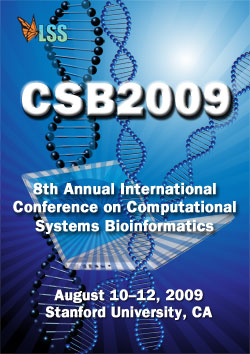Understanding distal transcriptional regulation from sequence, expression and interactome perspectives
Arvind Rao*, David J. States, Alfred O. Hero, James D. Engel
Bioinformatics, University of Michigan, Ann Arbor, MI 48109, USA. ukarvind@umich.edu
Proc LSS Comput Syst Bioinform Conf. August, 2009. Vol. 8, p. 127-138. Full-Text PDF
*To whom correspondence should be addressed.

Gene regulation in eukaryotes involves a complex interplay between the proximal promoter and distal genomic elements (such as enhancers) which work in concert to drive precise spatio-temporal gene expression. The experimental localization and characterization of gene regulatory elements is a very complex and resource-intensive process. The computational identification of regulatory regions that confer tissue-specific expression of a gene is an important challenge for computational biology. One popular strategy for enhancer localization from DNA sequence is the use of conservation based prefiltering and more recently, canonical transcriptional factor motifs or de-novo sequence motifs. However, there is an ongoing effort in the computational biology community to further improve the fidelity of enhancer predictions from sequence data by integrating other, complementary genomic modalities. In this work, we propose a framework that complements existing methodologies for prospective enhancer identification. The methods in this work derive from two insights: one, that chromatin modification signatures can discriminate proximal and distally located regulatory regions. Second, that the notion of promoter-enhancer cross-talk (as assayed in 3C/5C experiments) might have implications in the search for regulatory sequences that co-operate with the promoter to yield tissue-restricted, gene-specific expression.
[ CSB2009 Conference Home Page ] .... [ CSB2009 Online Proceedings ] .... [ Life Sciences Society Home Page ]